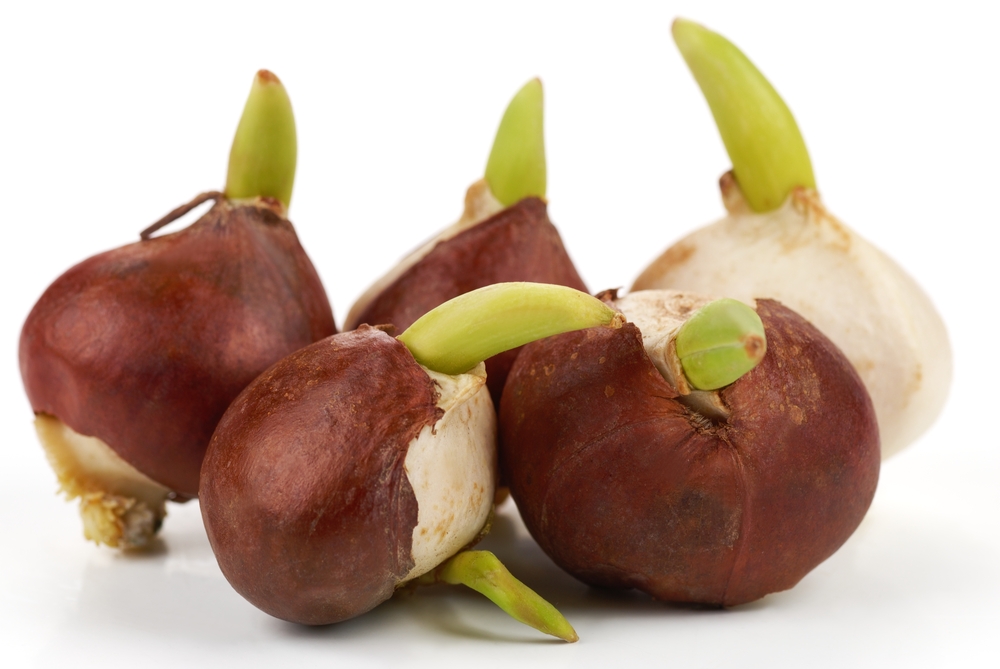It sounds aggressive, but it’s more like gentle coercion.

Fall finds garden centers hawking bulbs for tulips, daffodils and other spring bloomers. You can plant these outdoors before cold weather comes, or bring them inside and engage in a little trickery for a winter bloom.
How Forcing Works
Most spring-blooming bulbs require winter chill in order to flower. But they don’t need too cold conditions for the whole winter, and you can start the process early in your refrigerator (or buy “pre-chilled” bulbs). You then simulate the coming of spring by bringing them into your warm home—and voilà, flowers in the middle of winter. Some bulbs—namely paperwhites and narcissus—don’t require chilling, so all that’s required is planting them in a warm place.
The Forcing Process
Step One – Potting
Pot up your bulbs in a lightweight potting mix, pointy end up, with about half the bulb above the soil line. Feel free to put several bulbs in a pot, leaving a half inch or so between each one. You may also purchase bulb forcing vases, hourglass-shaped containers that support the bulb above the water—no soil required. Alternatively, fill any clear glass container with gravel or pebbles and plant the bulbs per the instructions for soil.
Step Two – Chilling
Skip this step for paperwhites and amaryllis, as well as for pre-chilled bulbs. For all other bulbs, place the container in a dark location where it will remain between 35 and 45 degrees. A refrigerator is perfect—except for the fact that produce gives off a gas that inhibits bulb growth. So this is really only an option if you happen to have a second refrigerator that you can keep produce-free. An unheated basement or garage is often just right. For bulbs in soil, keep them moist but not soggy during the chilling period. For bulbs in glass containers, keep the water level just below the base of the bulbs and change it once a week or so. The bulbs will be forming roots during this period, which will grow into the water.
Step 3 – Waking Up the Bulbs
When the bulbs begin to sprout from the top—this takes between two and four months depending on the variety—bring them into a warmer, brighter space. They need to stay around 60 to 65 degrees in an area with some light (but not direct sun) for about a week as a transitional period. This is slightly below room temperature in most homes, so try the coolest room of your house (typically a lower-level room on the north side). The stems will continue to grow during this period.
Step 4 – Stimulate Blooming
After a week, move the bulbs to a warm, sunny window. Depending on the variety, flower buds will begin to form in two to four weeks. Once the buds open, the flowers will last longer if placed out of direct sunlight and away from the draft of heating vents. Remember to add water throughout this period if the soil becomes dry or the level in the glass containers falls more than a half inch or so below the base of the bulbs.
Best Varieties for Forcing
Any spring-flowering bulb can be forced to bloom indoors in winter. Here are a few varieties to consider: narcissus, amaryllis, crocus, tulips, hyacinths, daffodils, and snowdrops.
Do the forced bulbs grown in soil bloom again the next year?